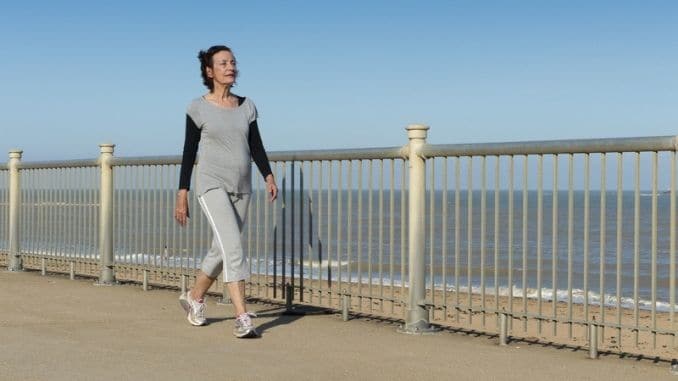Walking is a popular way for people of almost any age and fitness level to increase their activity. But what can you do if your usual evening exercise has become too easy? Of course, you could always walk longer, extending your outing by an additional 15 minutes or half an hour, but that might be difficult to do if you are already crunched for time. Today we have shared 10 simple ways you can amp up your next outing, burning more calories in the same amount of time to make your walk even more impactful.
1. Get Weighted Down
One of the simplest ways to kick your next neighborhood walk up to the next level is to invest in some basic ankle weights. These wraparound weights make your muscles work harder to execute the same movements, which increases your overall endurance and cardiovascular health. Ankle weights are relatively inexpensive and readily available from most sporting goods stores. It’s best to keep the weight light for general walking (5lbs or less). Otherwise, your stride will likely be altered, placing undue stress on your lower back and pelvis.
 |
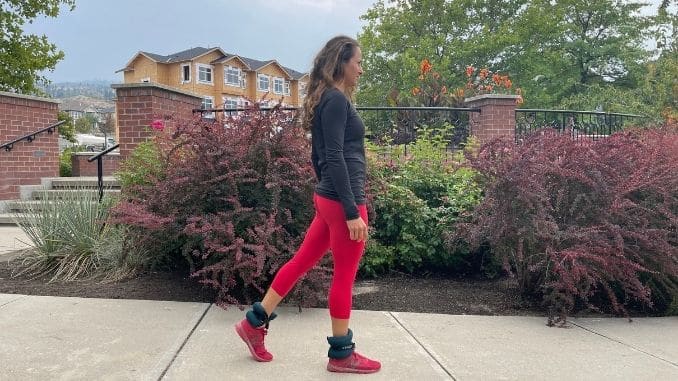 |
2. Drive-Up Those Knees
If you are looking to amp up your cardio on your next walk, start with some basic high knees. The higher you drive your knees, the greater the challenge to your cardio. Start in an upright standing position with your feet shoulder-width apart. Step forward with one foot, driving your opposite knee to hip height. Land steadily on your foot before driving your opposite knee upward. Repeat this movement, alternating back and forth. Maintain good posture throughout the movement, making sure you are not hunching forward. To make this exercise easier, try lifting your knees only slightly off the ground. To make this exercise more challenging, add a hopping movement from one foot to the other. Start with 1 set of 10 repetitions on each side, increasing the repetitions as your endurance improves.
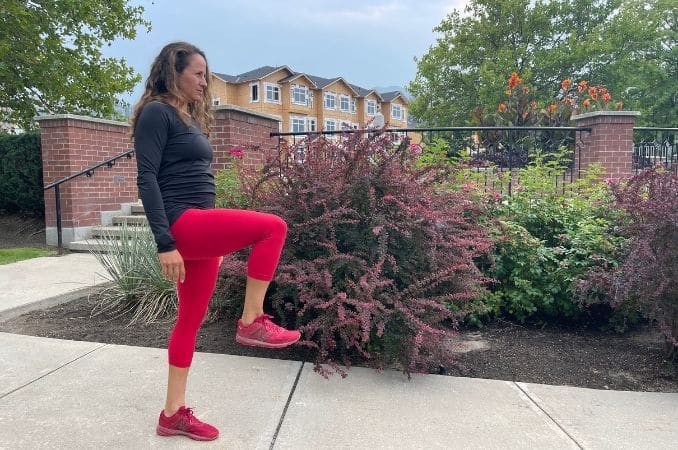 |
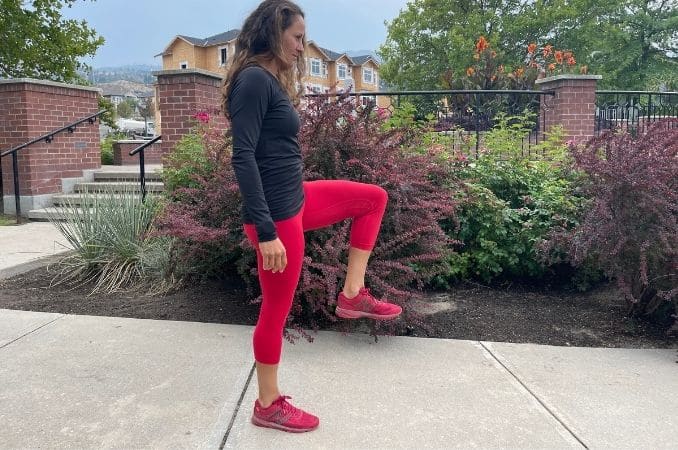 |
3. Kick Butt
Butt Kickers are another great way to challenge your cardiovascular endurance while walking. Start in an upright standing position with your feet shoulder-width apart. Step forward with one foot and kick back your opposite leg, bending your knee to bring your foot to your seat. Land steadily on your foot before repeating the movement with your opposite leg. Repeat the movement, alternating back and forth. Maintain good posture throughout the exercise, not leaning your upper body too far forward. To make this exercise easier, do not bend your knees as much. To make this exercise more challenging, incorporate some arm movements, raising your arms overhead as you step down, and pulling your arms down as you bring your foot to your seat. Start with 1 set of 10 repetitions on each side, increasing the repetitions as your endurance improves.
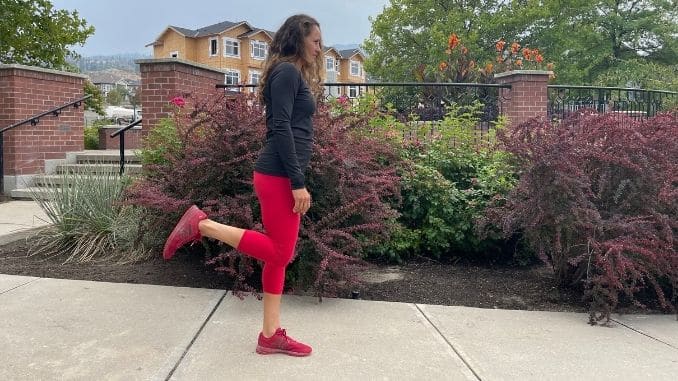 |
 |
4. Lunge Walk
Lunges are one of the best exercises for toning and strengthening your legs, glutes, and core. They also can help improve your posture and strengthen your back and hips. With all of these benefits, adding some lunges to your next walk likely sounds like a great idea. Start in an upright standing position with your feet shoulder-width apart. Take a big step forward with one foot, then bend both knees to lower your back knee towards the ground. Raise back up to the standing position, stepping forward with your back foot and repeating the movement on the opposite side. You can make this exercise easier or more challenging, depending on the depth of your lunge. Start with 1 set of 5 – 10 repetitions on each side, increasing your repetitions as your endurance improves.
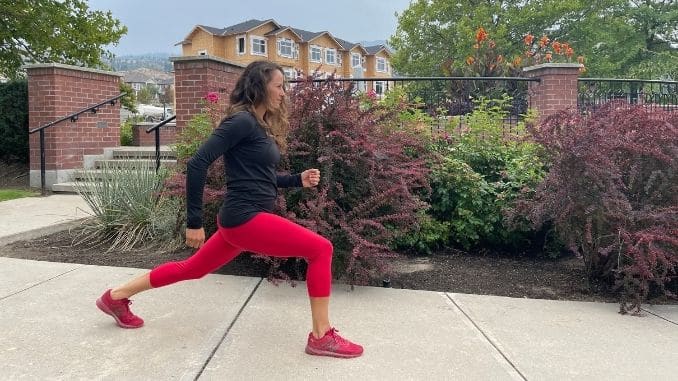 |
 |
5. Find Some Stairs
Climbing stairs is one of the absolute best exercises for fat burning, strengthening, and toning your lower body, and kicking up your cardio. There’s a reason that stair climbers are such a popular piece of equipment at most gyms! The next time you are planning a good walk, look for some stairs to incorporate into your workout. Many parks and walking trails often build stair features into their landscapes for hikers to take advantage of. If your usual route does not include any stairs, try starting and ending your walk by climbing your stairs at home. No stairs? No problem! An inclined surface can also provide tremendous cardio and strengthening benefits, so don’t avoid those hills!
6. Use a Bench for Some Upper Body Exercises
A great way to switch things up and make your next walk far more interesting is to find a fence, bench, or tree and go through some simple upper body exercises. On your next jaunt around the neighborhood, give these 3 exercises a try:
Incline Push-Ups
Begin in an upright standing position in front of a fence, bench, or tree. Place both hands on the bench, then step back with both feet to increase the angle of your body. Keep your head, shoulders, hips, and legs in alignment. Bend your elbows to lower your body towards the bench, then straighten your arms to complete the push-up movement. Repeat the movement. The greater the angle of your body, the more challenging this exercise will be. Start with 1 set of 10 repetitions.
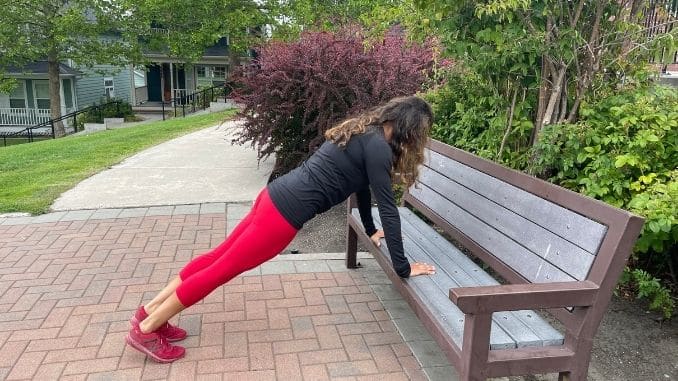 |
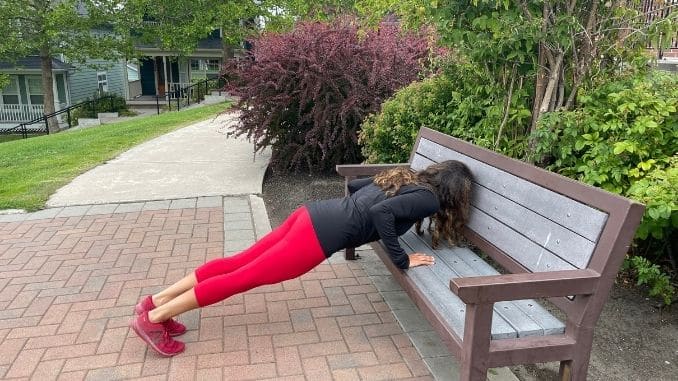 |
Tricep Dips
Begin in an upright seated position on a bench. Place your hands at your sides on the bench for support, then shift your seat forward so that your weight is supported solely by your arms and feet. Bend your arms to slowly lower your seat downward, then straighten your arms to complete the tricep exercise. Repeat the movement. To make this exercise easier, use your legs to assist with the movement. To make the exercise more challenging, straighten your legs so that most of your weight is concentrated on your arms. Start with 1 set of 10 repetitions.
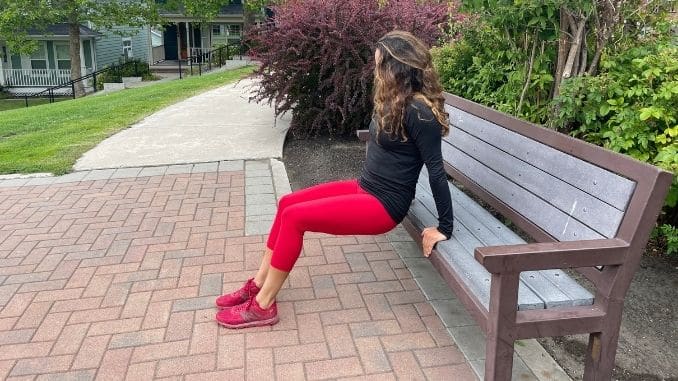 |
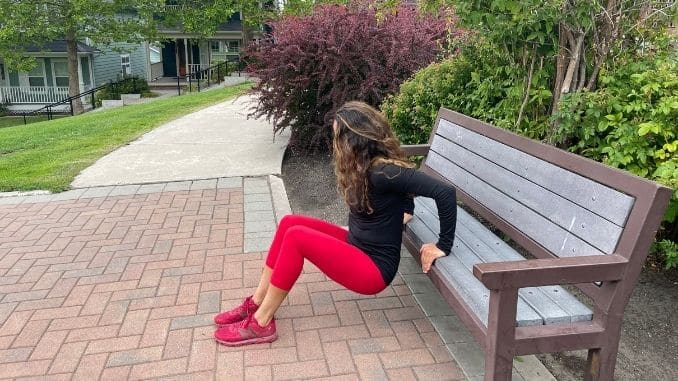 |
Inclined Mountain Climbers
Start in an upright standing position facing the bench. Place both hands on the bench and step back with both feet to increase the angle of your body. Maintain good alignment with your head, shoulders, hips, and legs. Drive one knee up towards your chest. Bring your knee back to the starting position, then repeat the movement on the opposite side. Repeat the movement, alternating sides. You can make this exercise easier or more challenging, depending on the angle of your body. Start with 1 set of 5 repetitions on each side.
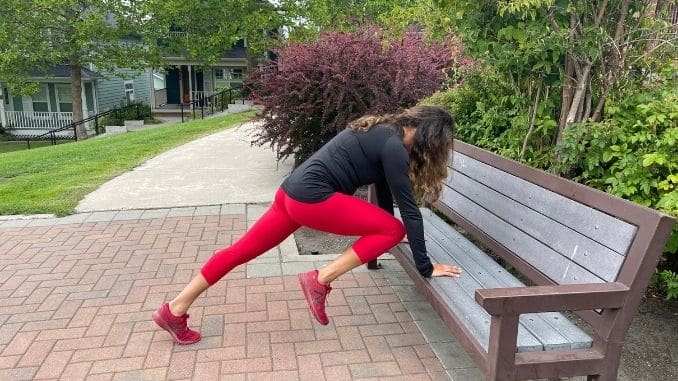 |
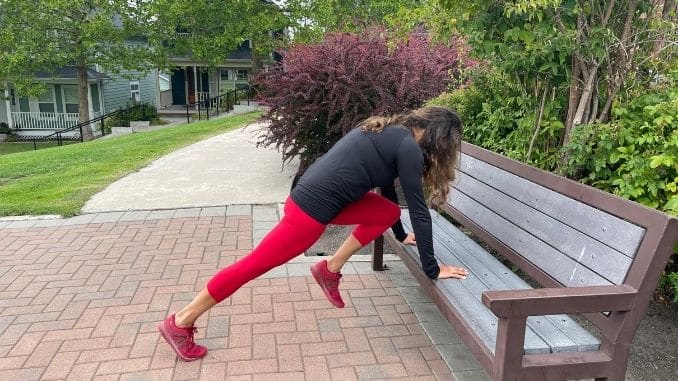 |
7. Turn it Around – Try Walking Backwards
Did you know that there has been a multitude of mental benefits associated with walking backward? It’s true! Studies have shown that walking backward is amazing for improving balance, and has also been associated with:
- Enhancing your sense of body awareness
- Increasing your body coordination
- Sharpens your thinking skills and improves cognitive control
- Improving mood and decreasing workout fatigue
If the mental benefits aren’t enough of a reason to kick it into reverse, consider this. Walking backward activates several different muscles than walking forward does, many of which are usually underused. Walking backward actually gets your heart pumping faster than moving forward does, resulting in a higher calorie burn in a shorter amount of time.
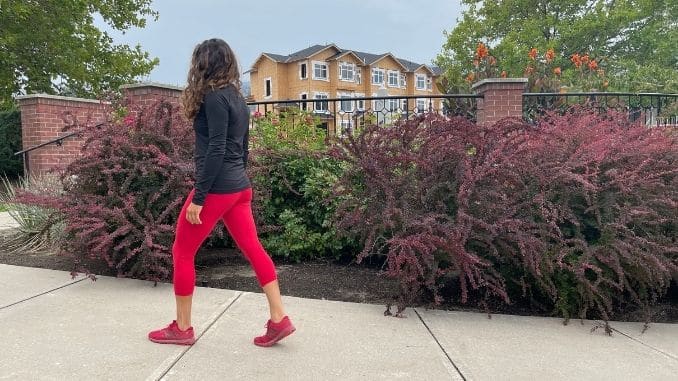 |
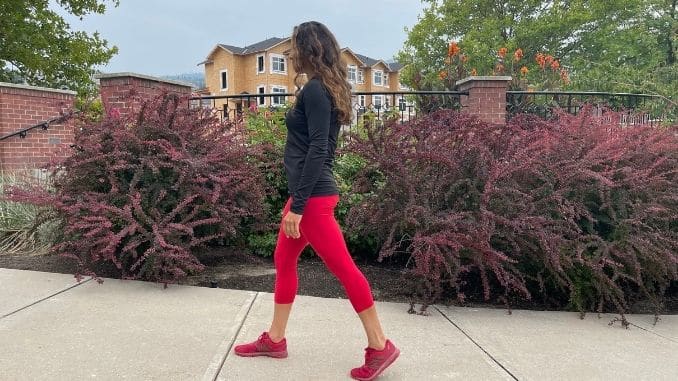 |
8. Give Trekking Poles a Go
Trekking poles are a common hiking accessory that you occasionally see used on everyday walks. When hiking, these poles can help protect your knees (especially when going downhill), improve power going uphill, increase speed, and help with balance on uneven trails. Trekking poles incorporate your arms and shoulders into the walking motion, which can help elevate your cardio output on any walk. They also help improve posture, ensuring that you stay in an upright position throughout your trek. 9. Punch it Out
9. Punch it Out
It might seem obvious, but the more muscles you engage in an exercise, the greater the cardio output, and usually the more benefit to your overall health. More often than not, your arms are not intentionally incorporated into a basic walking motion. To make your next walk more impactful, try adding some basic arm movements to get your heart pumping. Try swinging your arms in strong, controlled movements, punching your arms forward at chest height, or punching your arms overhead. For an even greater challenge, carry some light dumbbells on your next walk.
 |
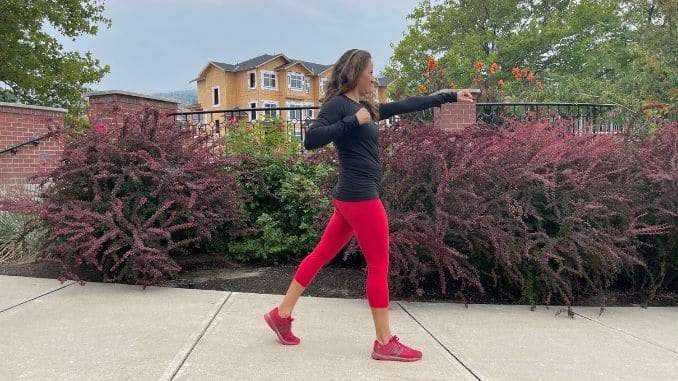 |
10. A Change of Pace
Often referred to as ‘interval training’, frequently changing your walking speed is a simple way to spice up your usual stroll. Interval training involves alternating short bursts of intense activity (usually 30 seconds) with longer periods of less intense activity (1 to 2 minutes). For example, you could challenge yourself by speed walking or jogging for 30 seconds before returning to your usual pace. Remember, the more vigorous the exercise, the greater the calorie burn, even for short durations. Interval training is also a great way to improve your aerobic conditioning.
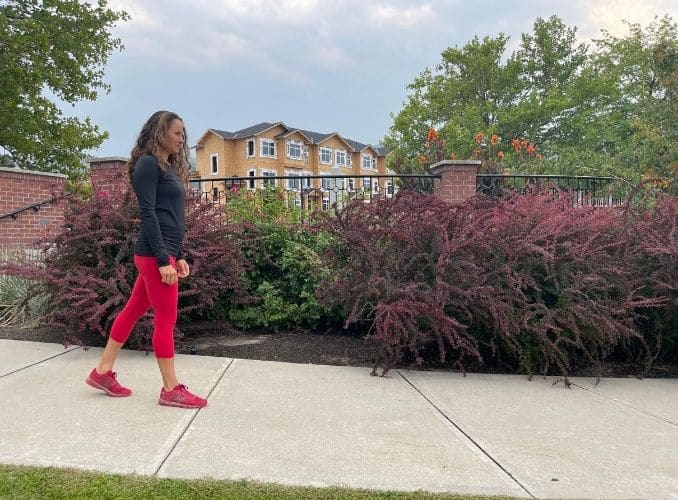 |
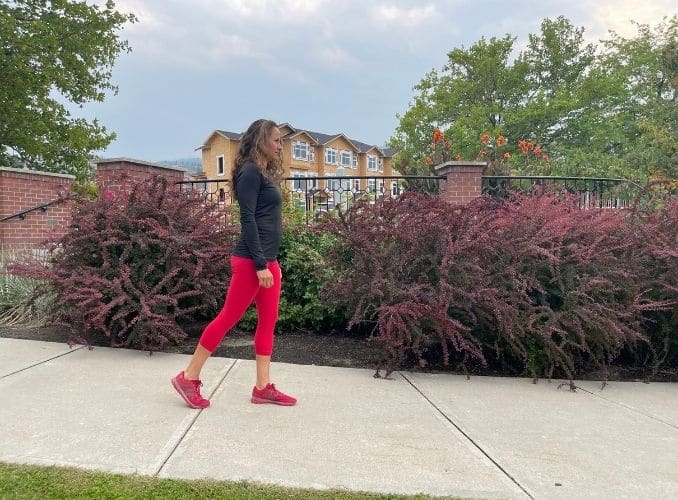 |
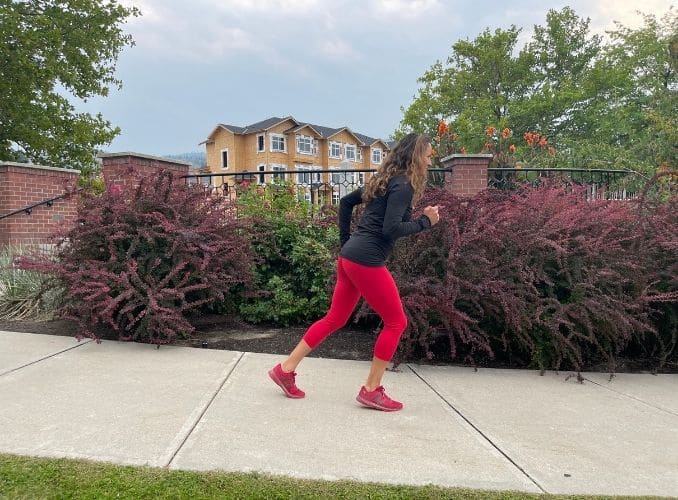 |
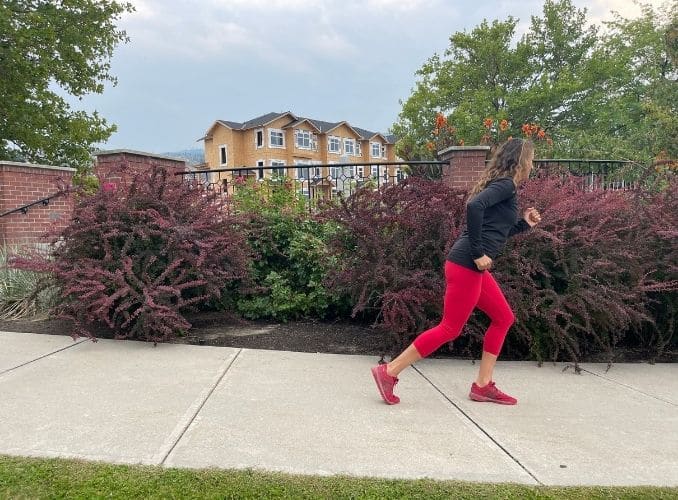 |
Of course, there is nothing wrong with a simple stroll around the block, but changing it up from time to time is a great way to activate more muscles, improve your cardio, and save you from boredom. Try some of the suggestions above the next time you head out, or even better, combine multiple tips to make your walk even more challenging.
Of course, excessive exercise can sometimes lead to painful injuries like Achilles Tendinitis. Learn how to eliminate this pain safely and naturally here.

